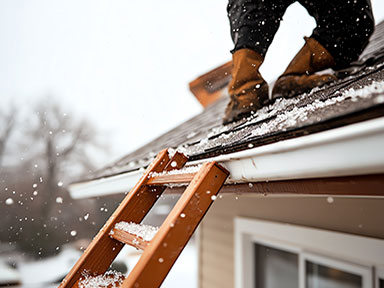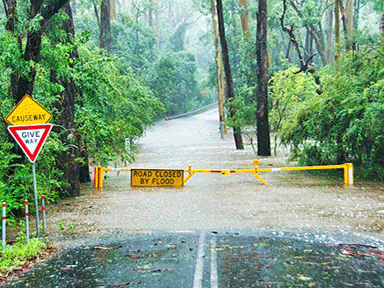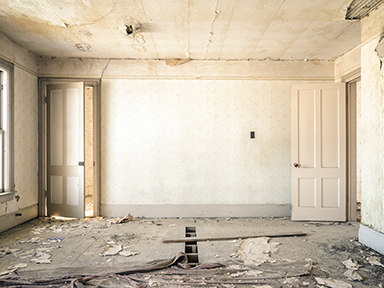On 30 March 2020, we received a ‘total loss’ claim on the back of fire damage. This means, a landlord’s property went up in flames and unfortunately the house was unsalvageable. Why are we telling you this? Well, just because we are in the middle of a global pandemic, it doesn’t mean your property is suddenly immune from damage or loss! So, as always, we want to make sure you are fully informed about the importance of landlord insurance and make sure you understand what you are and aren’t covered for…
Bushfire…fire started by an electrical fault…fire started by an unattended candle…fire started by frypan mishap…fire caused by a heater…fire started by a pyromaniac tenant or arsonist – it’s all the same thing, isn’t it? Well, no.
When it comes to insurance, the reason the fire started (cause and responsible party) and also what caused the damage (by flame, smoke, melting, scorching) determines whether there is cover or not. This means it is vital that landlords read the fine print in the product disclosure statement (PDS) that comes with their insurance, as not all policies cover all types of fire damage.
First off, we use a bunch of different terms in this article that relate to fire, and have created a glossary below for you to reference if you get confused…
- Arson – is the act of intentionally and maliciously destroying or damaging property through the use of fire
- Ash – is the powdery residue left after the burning of a substance
- Burning – means on fire
- Charring – means to burn or be burned partially so as to blacken the surface
- Explosion – is a rapid increase in volume and release of energy in an extreme manner, usually with the generation of high temperatures and the release of gases
- Fire – means the production of light and heat by combustion or burning; a fire must produce a spark, flame or glow
- Flame – is a hot glowing body of ignited gas that is generated by something on fire
- Melting – means the action or process of liquefying due to heat (e.g. a hot pot causes a laminate benchtop to melt, or an appliance overheats and its casing melts)
- Scorching – means damage caused by heat, not flames (e.g. holes burned in carpet by a cigarette or a piece of wood falling from the fireplace); to become marked or change colour because it is affected by too much heat
- Smoke – is the grey, black or white mixture of gas and very small pieces of carbon that is produced when something burns
- Soot – is a black powder composed mainly of carbon, produced when things like coal and wood is burned
Now, let’s look at some of the different types of damage a landlord could experience at their property…
Bushfire
Most landlord insurance policies will cover bushfire. But in terms of the specific circumstances under which the rental could be covered, that really depends on the individual insurer. Many insurers have varying definitions of ‘fire’, so it’s important to double-check the wording used.
How does EBM RentCover stack up? We offer cover for bushfire in our standard policies, however sometimes we may have embargoes in place (or a no cover period) which discourages people living in certain areas from taking out this kind of cover because a bushfire is imminent. Also, we (like a lot of other insurers) only recognise fire damage if there was a flame present. In other words, landlords most likely won’t be covered for scorching or damage caused by smoke or soot from a bushfire.
Insurance for bushfire losses typically cover the landlord’s property only, and does not include the personal possessions of tenants, so they may like to consider renters’ contents insurance.
Electrical fault
Electrical fires are often covered under general fire damage, but if the fire is caused by faulty workmanship or a building defect, then cover may be excluded. Compensation from the electrician or builder would be the recourse.
How does EBM RentCover stack up? We offer cover in our standard policies for fire damage caused by an electrical fault. Typically, when you submit a claim for fire caused by an electrical fault, it needs to proved or substantiated in order to determine the success of the claim. We know this can be a bit daunting, so if you are a client of EBM RentCover and experience an electrical fault, we are likely to appoint an assessor to work out exactly how the fire started and what you can claim on.
Cover for fire would probably be denied if the property doesn’t comply with fire regulations (e.g. a heater is incorrectly installed). So, make sure you get professionals to work on the electrical needs of your property.
Unattended candle
For this to be covered, the unattended candle would have to have caused a fire. Very few landlord insurance policies would offer cover if it just caused some sort of burn mark or scorching.
How does EBM RentCover stack up? Say, if a curtain catches alight because of an unattended candle, you could submit a claim for this. However, if the carpet suffered a burn mark caused by dripping wax (and there was no fire), you could submit a claim to our team for consideration for tenant damage. You may find though, that the damage actually costs less than the excess so it would not be worthwhile. Also, in the interest of being up front: when carpets or floor boards are damaged, the policy will only respond to the damaged area, not the full replacement of all flooring in that room (unless, of course, it’s all damaged).
Frequently, policies exclude damage caused by negligence and the policy will only cover damage resulting from something that could not be helped. Some insurers may argue that negligence or recklessness does not constitute an accident. In the case of an unattended candle, liability may fall on the tenant. At EBM RentCover, we take all personal circumstances into consideration when determining the success of a claim, so if this happens at your investment property, get in touch with our Expert Care team and we can work with you on this.
Fire caused by the tenant (accidental and arson)
If a fire is accidently or deliberately caused by the tenant, a lot of times the investor is not covered, however at EBM RentCover, this is one area that really separates us from competitors (make sure you read your product disclosure statement to determine if you are protected from this possible eventuality with your current provider).
How does EBM RentCover stack up? Our policies offer protection for accidental fire damage by the tenant and arson. This means, if your house goes up in flames because of the tenant, you can submit a claim and our team will work with you to recoup losses. Some other insurance providers do not offer this cover as they believe the risk is too high. However, at EBM RentCover we like to go the extra mile to protect our landlords.
When it comes to arson, we want to be clear that the policy only responds if it was the tenant (or a stranger) who lit the fire – no insurer provides cover if the owner deliberately burns down their investment property.
Let’s sum it up…
While cover for different types of fire varies between insurance providers, there is one requirement for any type of fire cover to be applicable – the damage must have been directly caused by fire.
Many policies will not cover damage if there was no flame or the flame was too far away from the property. This means cover for other heat-related damage like scorching, melting, soot, ash or smoke will only be applicable if the fire also damaged the property or if it was from a fire within close range of the property (such as a neighbour's house).
At EBM RentCover our policies include cover for damage caused by fire, smoke or explosion, but not loss or damage caused by scorching, melting, or charring without flames.
The takeaway?
Given the varying definitions of fire and the exclusions surrounding other heat-related damage, it is important for landlords to carefully read the PDS to understand what damage will or won’t be covered. It is also an imperative that when taking cover, landlords nominate an adequate sum insured for both building and contents to avoid the risk of under-insurance in the event they need to make a valid fire damage claim.
At EBM RentCover we aim to deliver certainty by being open, honest and transparent. We educate clients about the unknown and want to ensure you have the information you need to make informed decisions about landlord insurance.
*While we have taken care to ensure the information above is true and correct at the time of publication, changes in circumstances and legislation after the displayed date may impact the accuracy of this article. If you need us we are here, contact 1800 661 662 if you have any questions.
You may also like
View all
Hailstorms can cause significant damage to rental properties. Here’s what you need to know to protect your investment property...

Flood events are a seasonal reality and will continue in the future. What does this mean for insurance?

Damage is damage, right? Well, not when it comes to insurance...



